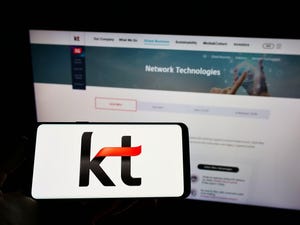
Ericsson and Nokia, the two European heavyweights of the network equipment market, have many noticeable differences. One is as Swedish as Abba, while the other is a Frankenstein's monster of Finnish, French and US parts (only with neater stitching than Boris Karloff). One is predominantly mobile, while the other dabbles in many bits of the equipment business. One is in turmoil; the other is coping.
Less obviously, Ericsson AB (Nasdaq: ERIC) looks more resistant to the idea of open networks than Nokia Corp. (NYSE: NOK). Neither, of course, really wants its customers to mess around with newfangled software technologies: These would make fraternizing with other suppliers much easier, and pose a threat to the lucrative old ways. But while Nokia has quietly become involved with some of the most important associations pushing for open network technologies, Ericsson remains stubbornly on the outside.
Figure 1: Ericsson versus Nokia  Unfashionable but still-likeable Swedish group takes on rejuvenated beast.
Unfashionable but still-likeable Swedish group takes on rejuvenated beast.
This is even more evident with the recent hullabaloo surrounding virtualization of the radio access network (RAN). For the big equipment makers, this is a more serious concern than other types of virtualization. The RAN has previously gobbled up most the spending on mobile networks and been a major source of revenues for the leading vendors. Virtualizing it would allow an operator to do its signal processing on standardized boxes in data centers, and could lead to major cost savings. Software vendor Mavenir Systems Inc. thinks virtualization could slash RAN capital expenditure by 50%. Such details must trouble any traditional RAN supplier. (See Is vRAN Still Too Hot to Handle?.)
But the market is undeniably moving in a troublesome direction. The year started badly for Ericsson when Cisco, a supposed partner, assembled a new group called the Open vRAN initiative, potentially undermining Ericsson's main business activity. At around the same time, several of the world's biggest operators clubbed together to form the Open RAN Alliance (or ORAN Alliance, for short). One of its aims is to make some of those RAN interfaces more open and interoperable. Germany's Deutsche Telekom AG (NYSE: DT), an ORAN Alliance member, hopes virtualization based on these open interfaces will cut RAN capital expenditure by half. (See Cisco Lands One on Ericsson With Open vRAN Initiative and Major Telcos Pool Efforts to Slash 5G RAN Costs.)
That is a direct challenge to the equipment giants that have controlled these interfaces and stand to lose out in a more open environment. Indeed, Rethink Research, an analyst firm, says these vendors have been able to block RAN virtualization through their ownership of the CPRI interface, which is used in important "fronthaul" connections between radio units and baseband equipment. Solve this kind of problem and operators might get the open and virtualized RAN some crave.
The Telecom Infra Project (TIP), an initiative that Facebook started in early 2016, is also trying to unlock the RAN. Phluido, a startup involved with TIP, has been working on an alternative to CPRI that would lower costs, it claims. While Phluido has no interest in releasing an open source version of its technology, it is an advocate of open approaches and interoperability. Inside TIP, it has been collaborating with operators including BT Group plc (NYSE: BT; London: BTA) and Vodafone Group plc (NYSE: VOD). (See Facebook's TIP Seizes vRAN Initiative From 3GPP.)
None of this would seem to give Ericsson or Nokia much incentive to participate in any of these groups. Yet Nokia has been involved with TIP since it was founded. Perhaps more strikingly, it is also a member of the ORAN Alliance. Ericsson has signed up to neither.
Next page: The upside of the open RAN
The upside of the open RAN
That seems unlikely to change soon. Quizzed about openness and possible membership of the ORAN Alliance, Ericsson responded with the following statement: "We welcome all discussions around openness. However, we have currently no public statement on the ORAN Alliance. We are in continuous contact with our operator customers and other shareholders in the industry, also the ones currently associated with ORAN, to ensure we continue to develop the right products that make operators successful in their markets and satisfy their end users' needs in the best way possible."
In this context, to say Ericsson is entirely opposed to openness would be going too far. "It is committed to open standard interfaces and rightly points to interfaces defined in 3GPP as what the industry has agreed," notes Gabriel Brown, a principal analyst with Heavy Reading. "In 5G this was settled only a year or so ago." When it comes to the ORAN Alliance, the stumbling block for Ericsson could be the all-important CPRI interface, which is not a 3GPP standard, says Brown. But Ericsson is hardly the only big vendor that stands outside the ORAN Alliance: China's Huawei, the other member of the global equipment triumvirate, has also steered clear. Nor is Huawei Technologies Co. Ltd. a member of TIP.
Even so, Nokia appears to see less threat, and perhaps some upside, in open RAN technologies. The explanation for that could lie in some of the aforementioned differences between Ericsson and Nokia. For one thing, with its broader portfolio of network equipment, Nokia is not as dependent on the mobile market as Ericsson, and therefore assumes less risk with a radical new approach.
For more NFV-related coverage and insights, check out our dedicated NFV content channel here on Light Reading.
Nokia might even see RAN virtualization and openness as an opportunity to be disruptive. "It's fair to say that some of the senior RAN architects and systems designers at Nokia have a long-standing interest in the idea of the programmable RAN," says Brown. He points out that open RAN technology could have a positive story for the industry. "Yes, open RAN can, in principle, help to radically reduce cost per bit, but it can also accelerate the rate at which innovative radio technology can enter commercial networks, which is just as important."
In the meantime, there have been suggestions that Nokia currently trails Ericsson and Huawei on mainstream RAN capability. Although Nokia would undoubtedly refute that charge, it managed to lose a long-standing contract with Deutsche Telekom in late 2017, when Ericsson displaced it as a RAN vendor in Germany. Again, this could drive Nokia toward open RAN and virtualization technologies as a way of reclaiming the initiative. (See DT Ditches Nokia From Its German Radio Access Network.)
Nokia's takeover of Alcatel-Lucent in early 2016 may have brought some cultural change, too. With their strong software capabilities, chunks of Alcatel-Lucent could form the building blocks of a profitable, standalone software business in future, reckons Nokia. This software mindset seems bound to influence attitudes across the entire organization, including Nokia's willingness to embrace new software-based RAN technologies. (See Nokia: Software Plan Already Boosting Profitability.)
Ericsson has good reason to be warier. Struggling to restore profitability after reporting operating losses in the last five quarters, the Swedish company is in a more precarious state than Nokia. For senior managers and shareholders, the priority is a return to what Ericsson does best, not experimentation that might ultimately backfire. And if Ericsson is to break with convention, the capable but unflashy Börje Ekholm, who took charge of the business in early 2016, does not seem like the man who would do it. (See Ericsson: Desperately Seeking Profitability and Ericsson Stuck in Loss-Making Rut, Offloads Majority Stake in Media Unit.)
Still, Nokia's dalliance with TIP and the ORAN Alliance hardly portends a dramatic reinvention of the Finnish supplier. Nor is there an immediate threat to Ericsson. For all the interest in RAN virtualization, some major operators have yet to be convinced of its benefits. As those become clearer, the danger for Ericsson is that hesitancy or unwillingness to change leaves it on the outside of the open, virtualized RAN. (See vRAN Tech Hits Resistance at SK Telecom and Orange: Still No Clear Business Case for vRAN.)
— Iain Morris, News Editor, Light Reading
About the Author(s)
You May Also Like












